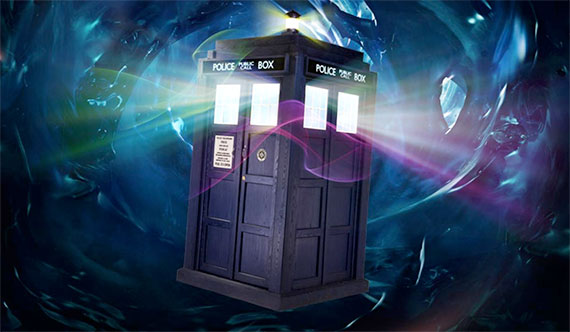Are Catholics Time (and Space) Travelers?

[ Estimated read time 5 minutes ]
Yes and no.
We are present to all of history in the Mass. Christ makes all of history and eternity present to us. The past, present and the future become "now" in the Mass. Or, perhaps the "now" becomes past and future. Perhaps the past and future expand into the present. And... .
Catechism of the Catholic Church - Sacrifice of Calvary
1330 The memorial of the Lord's Passion and Resurrection.
The Holy Sacrifice, because it makes present the one sacrifice of Christ the Savior and includes the Church's offering. The terms holy sacrifice of the Mass, "sacrifice of praise," spiritual sacrifice, pure and holy sacrifice are also used, since it completes and surpasses all the sacrifices of the Old Covenant.
The sacrificial memorial of Christ and of his Body, the Church
1363 In the sense of Sacred Scripture the memorial is not merely the recollection of past events but the proclamation of the mighty works wrought by God for men. In the liturgical celebration of these events, they become in a certain way present and real. This is how Israel understands its liberation from Egypt: every time Passover is celebrated, the Exodus events are made present to the memory of believers so that they may conform their lives to them.
- - -The TARDIS (Time And Relative Dimension In Space) is a fictional hybrid time machine and spacecraft.
The Mass is a harbour wherein Christ meets His people in an encounter that the Church describes as mystery.
The word mysterion (μυστήριον) is used 27 times in the New Testament. In the biblical Greek, the term refers to "that which awaits disclosure or interpretation". - WP
CCC 237 The Trinity is a mystery of faith in the strict sense, one of the "mysteries that are hidden in God, which can never be known unless they are revealed by God". To be sure, God has left traces of his Trinitarian being in his work of creation and in his Revelation throughout the Old Testament. But his inmost Being as Holy Trinity is a mystery that is inaccessible to reason alone or even to Israel's faith before the Incarnation of God's Son and the sending of the Holy Spirit.
Is it possible to know mystery, to enter into the mystery of faith?
1997 Grace is a participation in the life of God. It introduces us into the intimacy of Trinitarian life: by Baptism the Christian participates in the grace of Christ, the Head of his Body. As an "adopted son" he can henceforth call God "Father," in union with the only Son. He receives the life of the Spirit who breathes charity into him and who forms the Church.
360. Why is the Mass the same sacrifice as the sacrifice of the cross?
The Mass is the same sacrifice as the sacrifice of the cross because in the Mass the victim is the same, and the principal priest is the same, Jesus Christ.
(a) Christ, though invisible, is the principal minister, offering Himself in the Mass. The priest is the visible and secondary minister, offering Christ in the Mass.
(b) The most important part of the Mass is the Consecration. In the Consecration bread and wine are changed into the body and blood of Christ who then is really present on the altar. Through the priest He offers Himself to God in commemoration of His death on the cross.
- - -At the centre of the Paschal Mystery is the Eucharist. In fact, as Father Raniero Cantalamessa (preacher to the pontifical household) says, “the whole history of salvation is present in the Eucharist and the Eucharist is present in the whole history of salvation.” Before Christ, it was present as a prefiguring or foreshadowing; in Christ’s time, as an event; and now, as a sacrament. - BC Catholic
- - -To encounter the reality described in the Catechism is to encounter the way into hope, an eternity of life with God.
To read the above citations from the Catechism is to dip one's toe into the profound mystery of the life God desires to share with us, His desire to rescue us from the darkness of ignorance and sin.
To be immersed in the reality of the Cross and Resurrection is to embrace the way of Jesus Who offers Himself in every Mass. He offers His very Flesh and Blood, His life, to restore and sustain us in this life and to shepherd us into the next.
.jpg)





Comments
Post a Comment
Your comments will be appreciated and posted if 1) they are on topic and 2) preserve decorum.
Stand by your word.